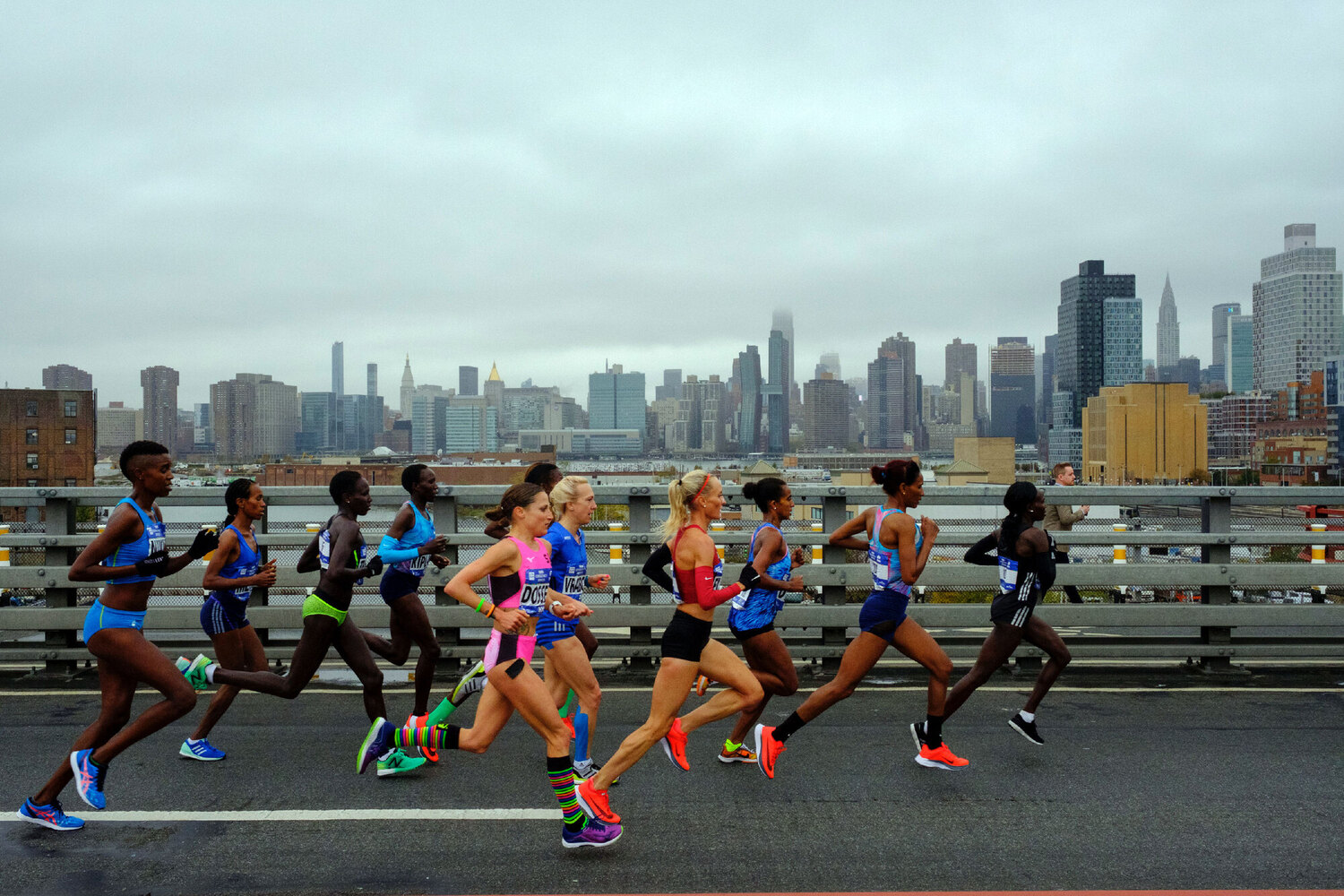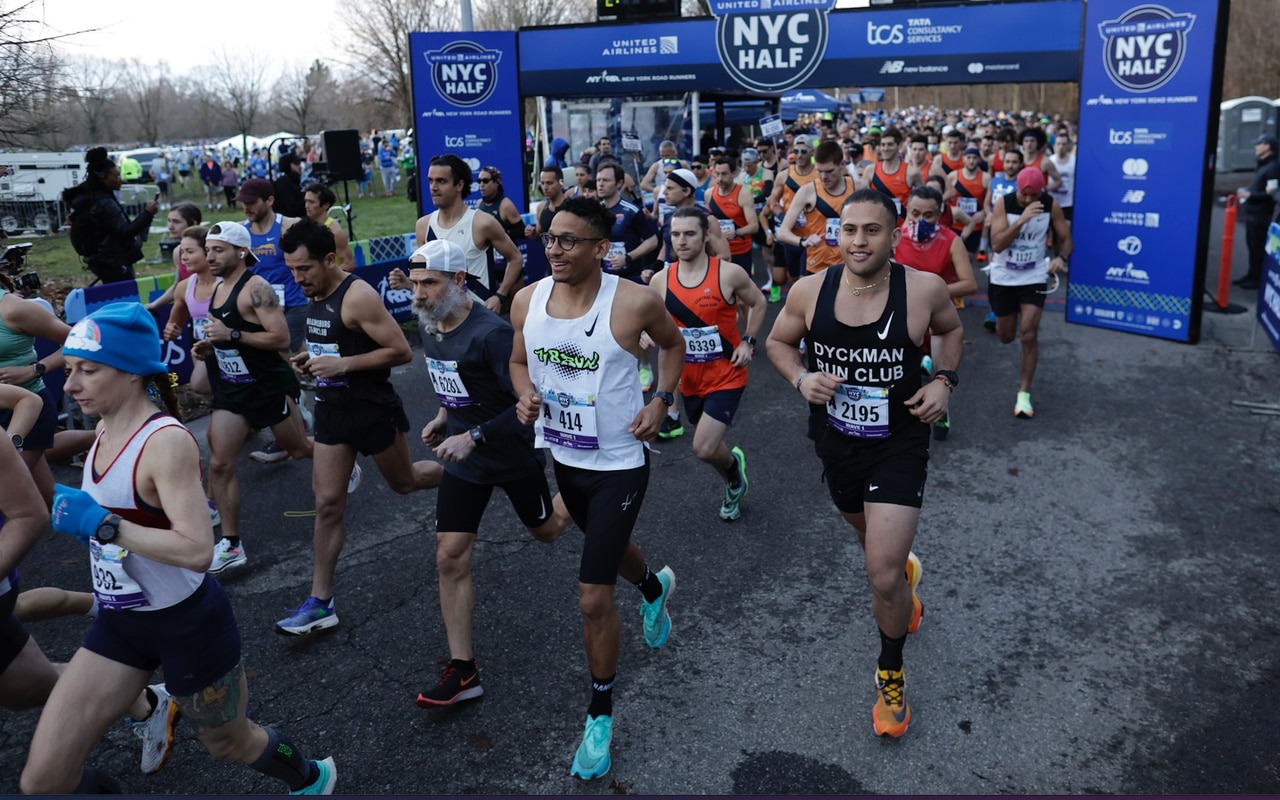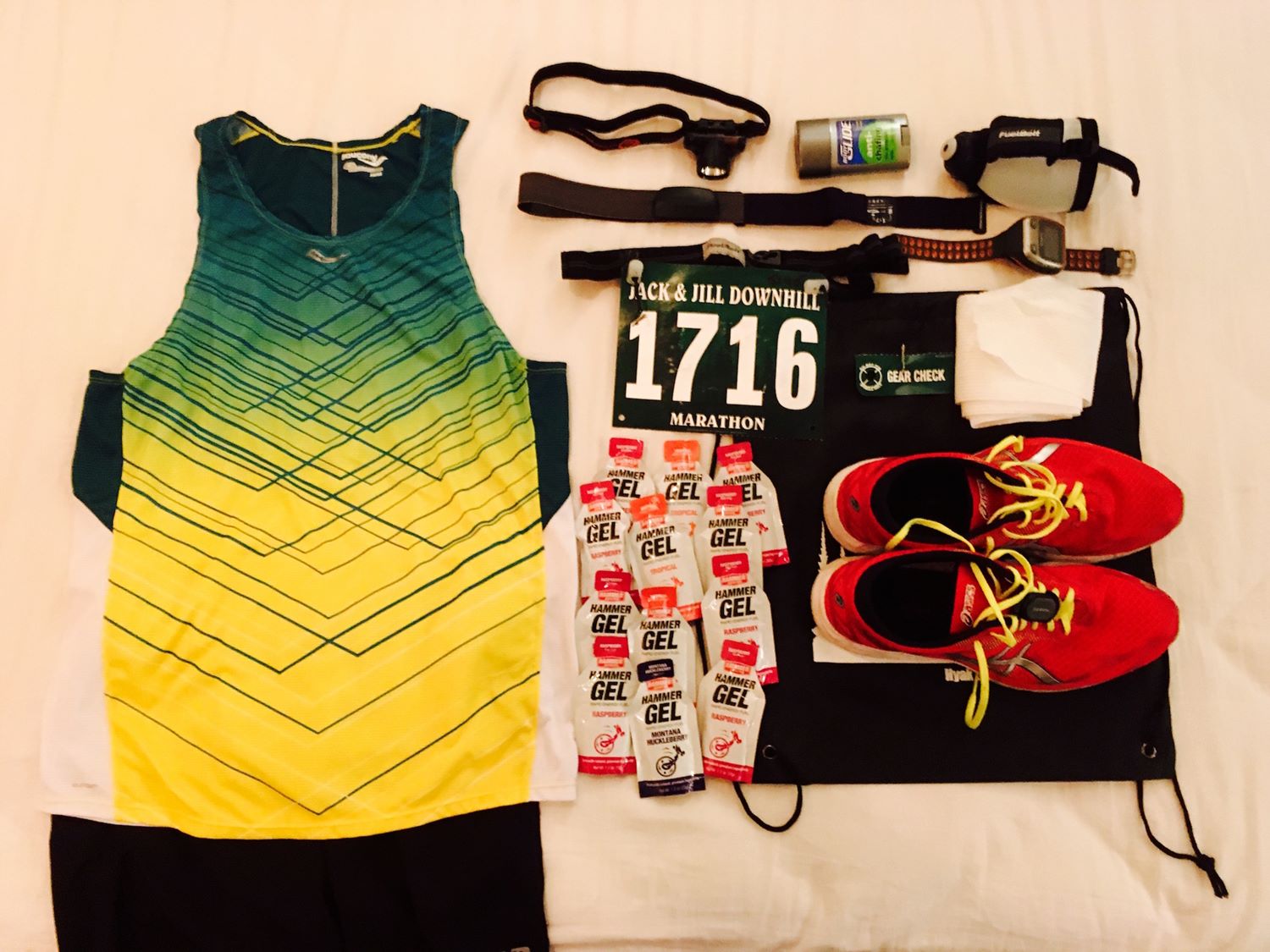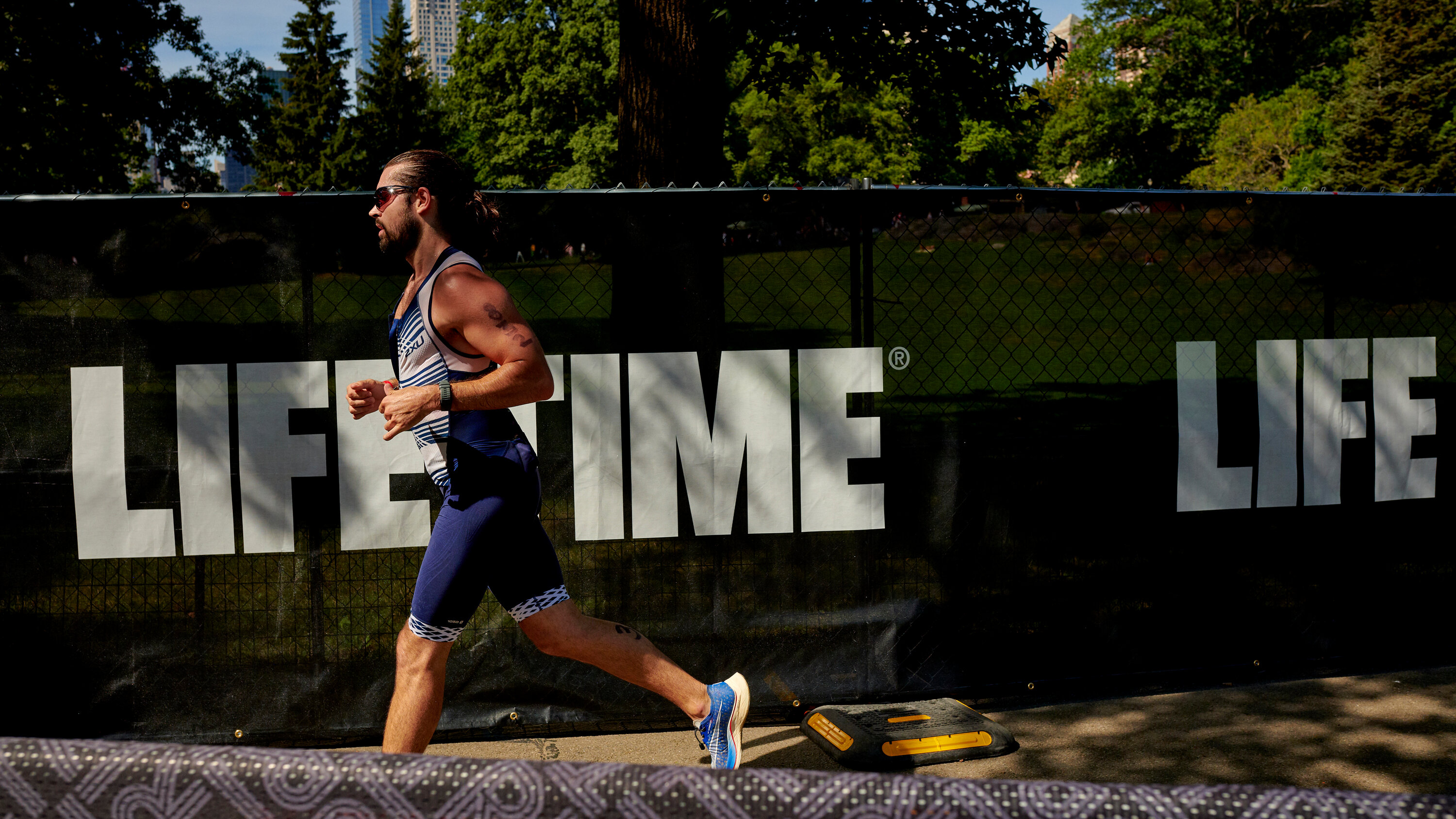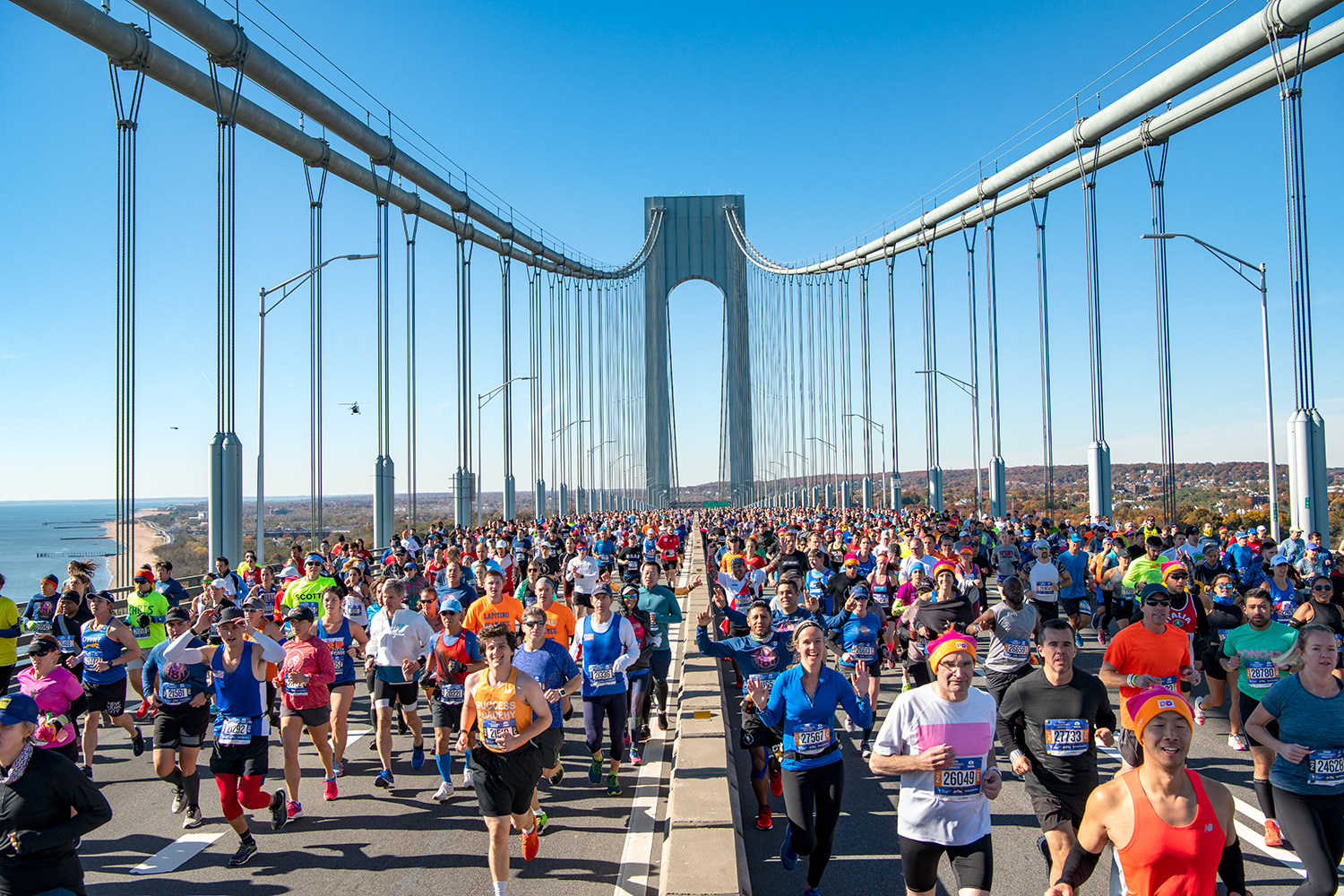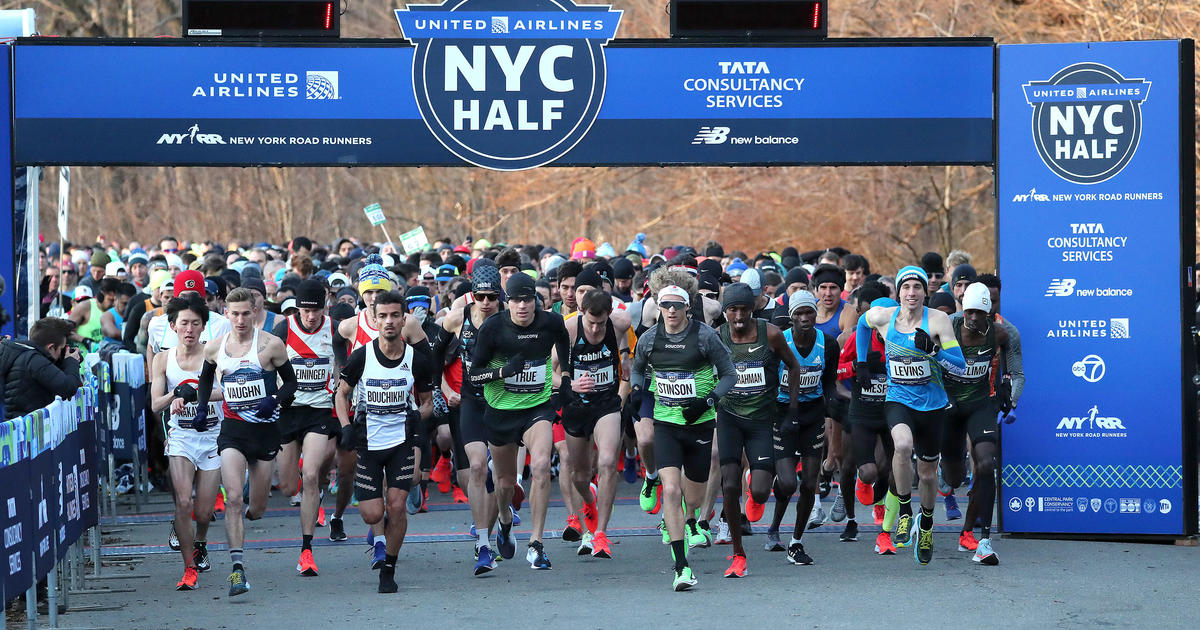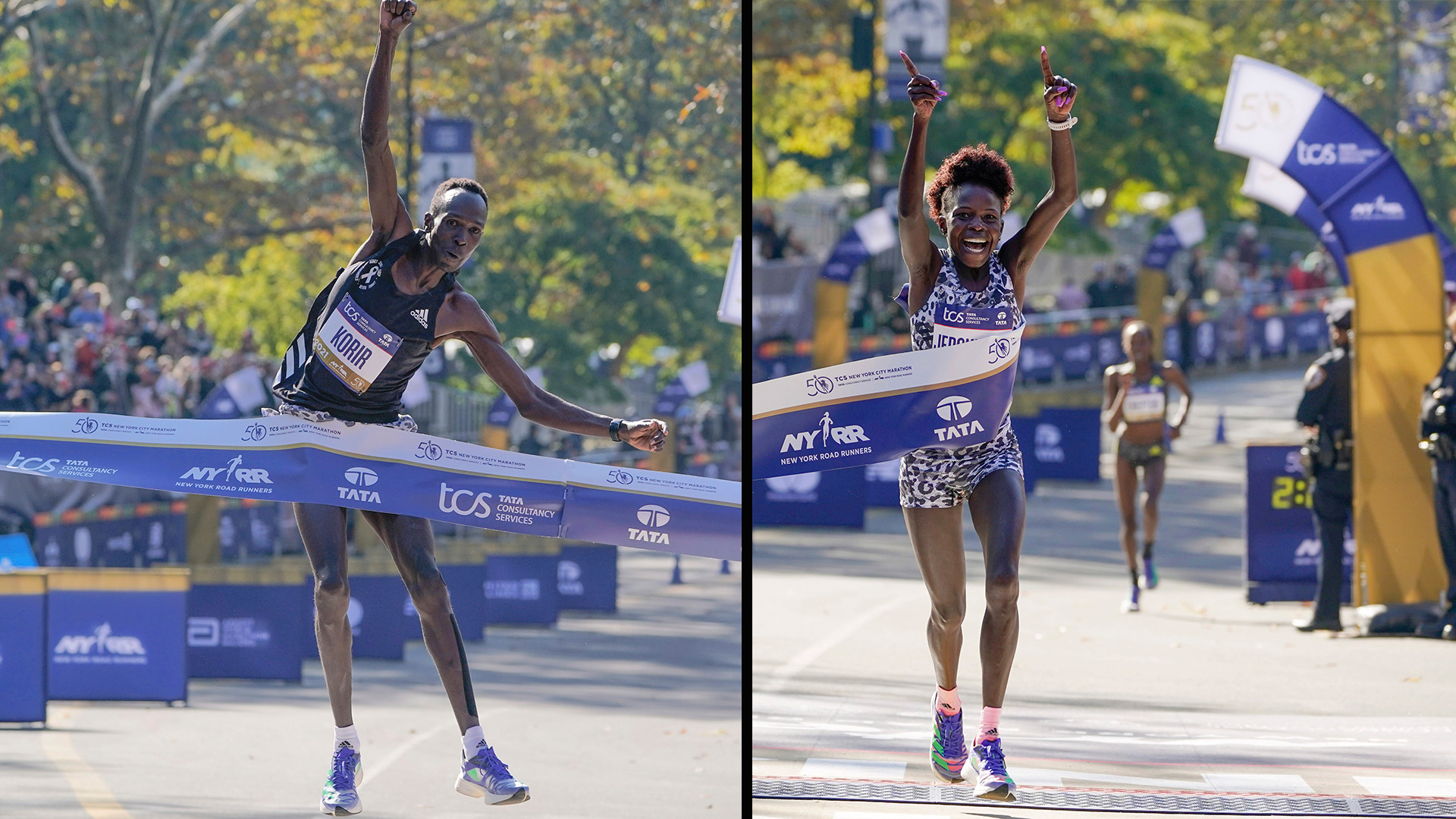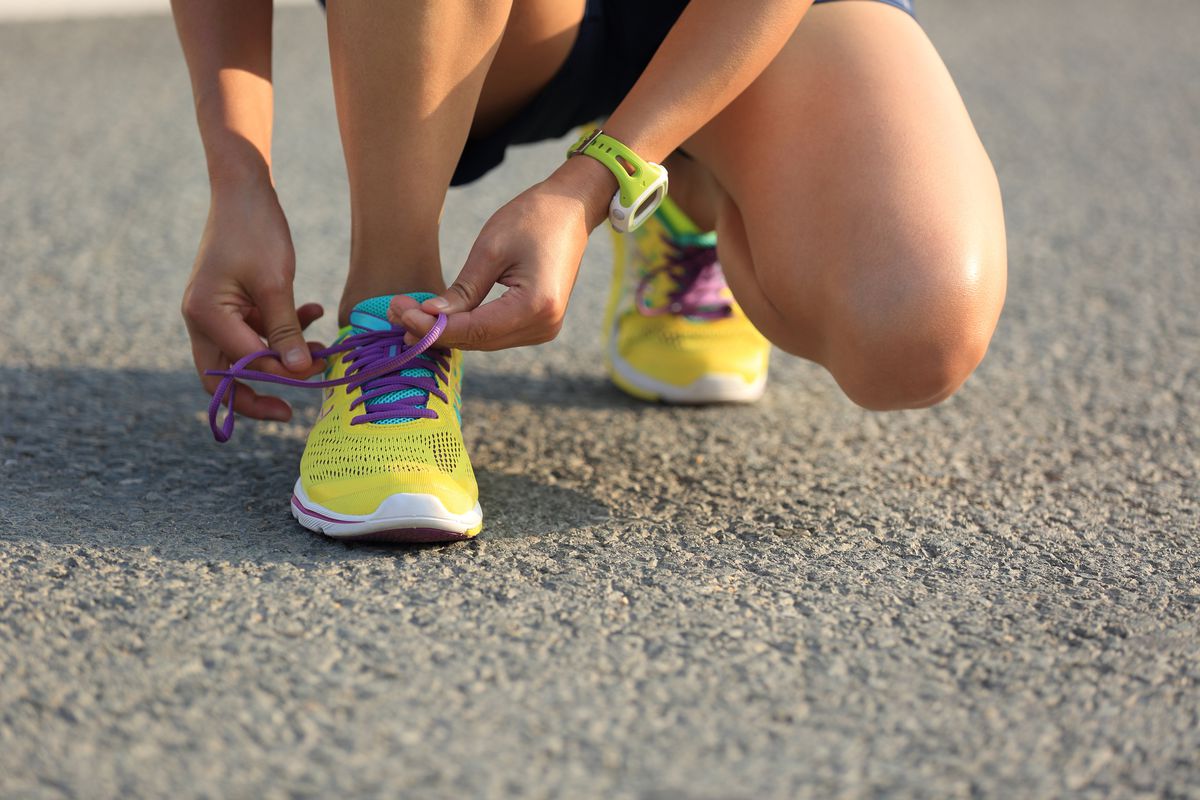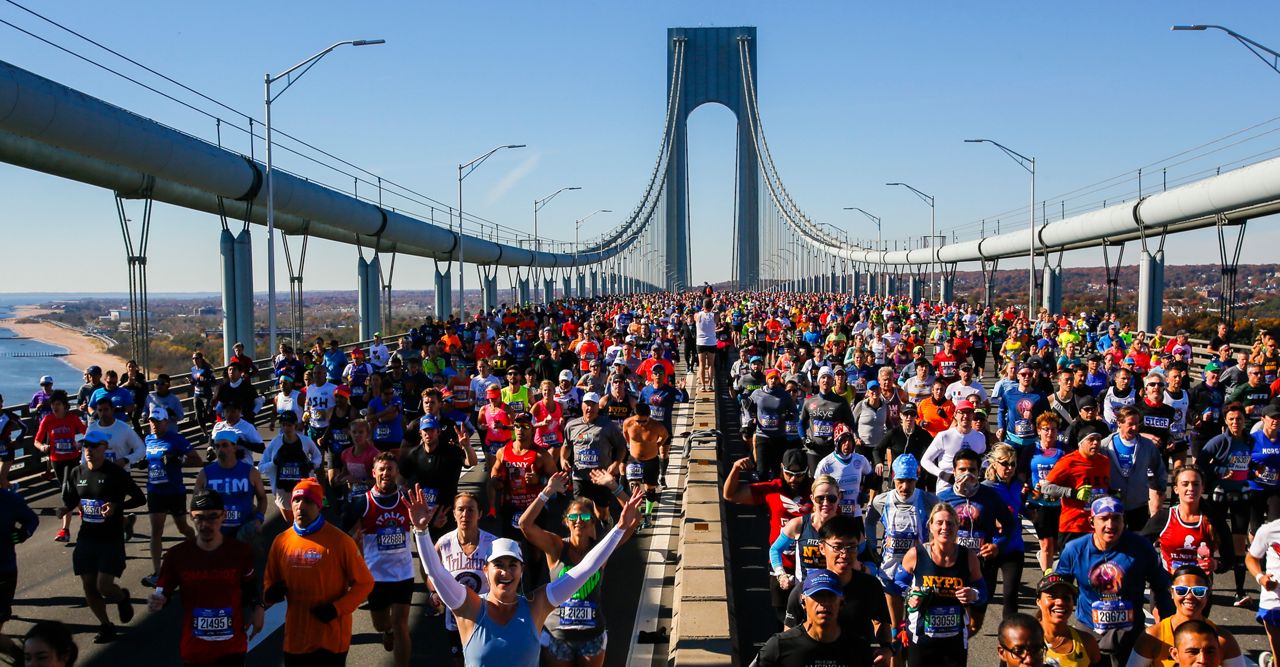

Featured
How Many People Run The NYC Marathon
Modified: January 2, 2024
Get featured in the NYC Marathon! Find out how many people run the race and join this iconic event that attracts runners from all over the world.
Introduction
The New York City Marathon, widely regarded as one of the most prestigious and iconic events in the running world, is an annual marathon held in the five boroughs of New York City. This historic race has captured the hearts of runners and spectators alike since its inception in 1970. Over the years, it has grown in popularity, drawing thousands of participants from all walks of life. The NYC Marathon has become a symbol of perseverance, community, and achievement. It showcases the diverse and vibrant spirit of New York City, bringing together people from all over the world to run through its famous streets and iconic landmarks. From elite athletes to first-time marathoners, this race offers a unique experience for everyone involved. In this article, we will delve into the history of the NYC Marathon, explore the growth in participation over the years, learn about the registration and qualification process, discuss the diversity of participants, analyze the training involved, highlight the crucial role played by volunteers, and examine the challenges and rewards of running the marathon. Furthermore, we will also explore the economic impact of this world-renowned event on the city. Whether you’re a seasoned marathon runner or simply someone fascinated by the endurance of the human spirit, this article will provide you with a comprehensive understanding of what makes the NYC Marathon so special. So, lace up your running shoes and get ready for an immersive journey through the heart and soul of this remarkable race.
History of the NYC Marathon
The New York City Marathon has a rich and storied history that dates back to 1970. It all started with a humble beginning, when a group of only 127 runners took on the challenge of running multiple loops in Central Park. The event was organized by Fred Lebow and Vince Chiappetta, who believed that a marathon in New York City could rival the prestigious races held in Europe. Over the years, the popularity of the marathon grew exponentially. In 1976, the race expanded beyond Central Park for the first time, taking runners through all five boroughs of New York City. This change allowed participants to experience the unique neighborhoods, iconic landmarks, and diverse communities that make up the city. In 1994, the marathon made its way across the Verrazano-Narrows Bridge, marking the official start line in Staten Island and solidifying its status as one of the most iconic marathon starts in the world. Today, the NYC Marathon boasts a breathtaking course that includes landmarks such as the Statue of Liberty, Brooklyn Bridge, and Central Park. Throughout its history, the NYC Marathon has provided countless memorable moments. In 2007, the marathon celebrated its one millionth finisher, a testament to its incredible growth and broad appeal. The race has also seen many record-breaking performances, including Geoffrey Mutai’s fastest-ever marathon time of 2:05:06 in 2011. The marathon has not been without its challenges. In 2012, Hurricane Sandy affected the race, forcing organizers to cancel it for the first time in its history. However, the resilience and determination of the running community prevailed, and the marathon bounced back stronger than ever the following year. Today, the NYC Marathon stands as a symbol of unity, perseverance, and triumph. It attracts elite runners from around the world, as well as thousands of amateur athletes who aim to conquer the 26.2-mile course. The marathon has become a true celebration of humanity’s ability to overcome obstacles and achieve greatness. As we delve into the different aspects of the NYC Marathon, it’s important to appreciate the historical significance of this race. It has evolved from a small gathering in a park into an internationally renowned event that captures the attention of millions of spectators and inspires countless individuals to challenge their limits. So, let’s dive deeper into the marathon’s growth and the incredible stories that have unfolded along the way.
Growth in Participation
Since its inception, the New York City Marathon has experienced tremendous growth in terms of participation. What started as a small gathering of 127 runners in 1970 has now become one of the largest and most popular marathons in the world. In the early years, the race attracted mainly local runners, with very few international participants. However, as the marathon gained popularity and recognition, word spread across the globe, and runners from all corners of the world began flocking to New York City to take on the challenge. The increased interest in the NYC Marathon can be attributed to several factors. First and foremost, the race’s reputation as one of the most iconic marathons in the world has drawn runners who are seeking a personal and collective experience like no other. The opportunity to run through the energetic streets of New York City and be cheered on by millions of spectators is an irresistible allure for many. Another factor contributing to the growth in participation is the sense of accomplishment and prestige associated with completing the NYC Marathon. Crossing the finish line of this race is considered a significant achievement and a lifelong memory for many runners. As a result, more individuals are motivated to train and prepare themselves for the demanding course. With the growth of social media and online running communities, the NYC Marathon has also gained exposure and generated buzz among running enthusiasts. Runners sharing their experiences, training tips, and stories of triumph have created a sense of community and camaraderie, inspiring others to embark on their own marathon journey. The increase in participation has led to the implementation of a lottery system for registration. The demand for race entries far exceeds the number of available spots, creating a competitive environment for hopeful participants. This is a testament to the marathon’s popularity and the desire of runners to be a part of this extraordinary event. The growth in participation has not only impacted the number of runners on race day but also the overall atmosphere surrounding the marathon. Every year, the streets of New York City are transformed into a festive and vibrant celebration of human achievement. Spectators line the course, offering words of encouragement and support to the runners, creating an electric and inspiring atmosphere that fuels the participants’ determination and motivation. As the NYC Marathon continues to expand and attract participants from around the world, it serves as a testament to the enduring allure of the event. The remarkable growth in participation only further solidifies the race’s status as one of the premier marathons in the world and highlights the indomitable spirit of those who choose to conquer its challenging course.
Registration and Qualification Process
The registration process for the New York City Marathon is highly anticipated and competitive. The demand for race entries far exceeds the number of available spots, making it a coveted opportunity for runners from all over the world. The registration window typically opens several months in advance of the marathon. Aspiring participants must visit the official race website and complete the online registration form within the specified timeframe. The registration fee varies depending on factors such as residency status and entry category. For most runners, the primary method of gaining entry into the marathon is through the lottery system. During the registration period, applicants submit their names into a random drawing, and a limited number of spots are allocated through this process. However, the lottery does not guarantee entry, as the demand often far exceeds the available slots. In addition to the lottery, there are several other ways to secure a spot in the NYC Marathon. One popular method is through the “9+1” program offered by New York Road Runners (NYRR). By participating in and completing nine NYRR races and volunteering for one event, runners can earn guaranteed entry into the following year’s marathon. Another option is qualifying based on a runner’s previous marathon finish time. Qualifying standards are set by the NYRR and are based on age and gender. Participants must have completed a certified marathon within a specific time frame that meets the qualifying standards. This process ensures that a certain level of running ability is demonstrated prior to participating in the marathon. For elite athletes, there is a separate application process through which they can gain entry based on their achievements and rankings. These athletes bring an added level of competition and excitement to the race, often vying for top positions and prize money. It’s important to note that even for those who secure a spot through the various methods, there are still additional steps to complete before officially participating in the race. Participants must fulfill all registration requirements, provide the necessary documents, and pay any outstanding fees. The registration and qualification process for the NYC Marathon adds to the anticipation and excitement surrounding the event. Whether it’s through the luck of the lottery, the dedication of earning “9+1” credits, or the achievement of meeting the qualifying standards, successfully gaining entry to the marathon is a significant milestone for any runner.
Diversity of Participants
The New York City Marathon is renowned for its diverse range of participants, both in terms of demographics and running experience. The race attracts individuals from all walks of life, creating a vibrant and inclusive event that celebrates the unity and diversity of the running community. One of the notable aspects of the NYC Marathon is its international appeal. Runners from across the globe gather in New York City to be a part of this iconic race. They represent different countries, cultures, and backgrounds, coming together for a shared experience. The marathon serves as a melting pot of cultures, fostering a sense of global unity and connection. The diversity of the NYC Marathon is also evident in the age groups of its participants. The race features runners of all ages, from teenagers to senior citizens. Older runners demonstrate their resilience and commitment to the sport, inspiring others with their determination. Younger runners bring a sense of energy and enthusiasm, infusing the race with a vibrant spirit. Furthermore, the marathon showcases the inclusion of differently abled individuals. The NYC Marathon allows wheelchair athletes to participate, highlighting the importance of accessibility and equal opportunities in the running community. Their inspiring performances serve as a testament to the power of determination and the ability to overcome obstacles. In addition to representing a wide range of backgrounds and abilities, the race also attracts runners with varying levels of experience. The NYC Marathon welcomes elite runners who compete for top positions and world records, as well as novice runners who are tackling their first-ever marathon. This diversity in experience creates a sense of camaraderie, as seasoned runners offer support and encouragement to those taking on the challenge for the first time. The inclusivity of the NYC Marathon extends beyond the runners themselves. The race relies heavily on the support of volunteers, who come from diverse backgrounds and play a crucial role in making the event a success. From handing out water at aid stations to cheering on the sidelines, volunteers create a supportive and encouraging environment that uplifts and motivates the participants. The diversity of participants in the NYC Marathon is a testament to the unifying power of running. It breaks down barriers and brings people from different backgrounds together, fostering a sense of community and shared accomplishment. Whether it’s the elite athletes, the everyday runners, or the volunteers, they all contribute to making the race a truly inclusive and inspiring event.
Training for the NYC Marathon
Preparing for the New York City Marathon requires a significant commitment of time and effort. It is essential for participants to follow a well-structured and personalized training plan to build endurance, strength, and mental resilience needed to conquer the 26.2-mile course. The training period for the NYC Marathon typically spans several months, allowing runners to gradually increase their mileage and fitness level. A common approach is to follow a training program that incorporates a mix of long runs, speed workouts, tempo runs, and cross-training activities. Long runs are a fundamental component of marathon training. These runs gradually increase in distance over time, allowing the body to adapt to the demands of running for extended periods. It helps build endurance and mental stamina, preparing runners for the physical and mental challenges they will face on race day. Speed workouts, such as intervals and fartleks, are crucial for improving running economy and race pace. These workouts involve alternating between periods of high-intensity running and recovery. Speed training helps develop leg turnover and cardiovascular fitness, which are essential for maintaining a steady pace throughout the marathon. Tempo runs are another vital component of training. These runs are done at a sustained, challenging pace, just below the runner’s maximum effort. Tempo runs help improve lactate threshold, allowing runners to sustain a faster pace for a longer duration without accumulating fatigue. In addition to running, cross-training activities such as swimming, cycling, or strength training can provide valuable benefits. These activities help prevent overuse injuries, improve overall fitness, and strengthen muscles that are not directly targeted by running. Proper nutrition and hydration are also critical during marathon training. Fueling the body with a balanced diet that includes carbohydrates, protein, and healthy fats is essential for optimal performance and recovery. Adequate hydration before, during, and after training sessions is crucial to maintain proper bodily function. Mental preparation is equally important as physical training. The NYC Marathon presents unique challenges, including the sheer distance, the crowds, and the physically demanding course. Visualizing success, practicing positive self-talk, and developing a strong mental resolve can help runners push through difficult moments during the race. It’s worth noting that every runner’s training plan should be tailored to their individual needs, taking into consideration factors such as experience, fitness level, and time availability. Consulting with a running coach or experienced marathoner can provide valuable guidance and ensure a proper training approach. Training for the NYC Marathon is a journey that combines physical endurance, mental strength, and unwavering determination. The countless hours spent pounding the pavement, the sacrifices made, and the consistency in training all culminate in one glorious moment: crossing the finish line of this legendary race.
The Role of Volunteers
The New York City Marathon is not only a test of endurance and determination for the runners but also a monumental effort that relies on the dedication and support of countless volunteers. These selfless individuals play a pivotal role in ensuring the smooth execution of the race and creating a memorable experience for all participants. Volunteers are involved in every aspect of the marathon, from the pre-race preparations to the post-race celebrations. Their tasks vary widely, but they all contribute to the overall success of the event. One of the key roles of volunteers is manning the aid stations along the course. These stations are strategically placed at regular intervals to provide runners with much-needed water, sports drinks, and energy gels. Volunteers cheerfully distribute these essential supplies, offering encouragement and support to weary runners. In addition to aid stations, volunteers also serve as course marshals, directing and guiding participants along the route. Their presence ensures that runners stay on the correct path and avoid any potential hazards. Course marshals play a crucial role in maintaining a safe and organized race environment. Another vital role played by volunteers is cheering and motivating the runners. Spectators line the streets of New York City, but volunteers are often the most enthusiastic and vocal. Their cheers, applause, and words of encouragement provide a much-needed boost to the runners’ morale, especially during the challenging sections of the course. Their enthusiasm creates an incredible atmosphere that spurs runners on and helps them push through the toughest moments of the race. Volunteers also assist in various logistical tasks, such as distributing race bibs, handing out finisher medals, and managing the gear check area. Their presence ensures that the runners can focus on their race without worrying about the administrative aspects. The role of the volunteers extends beyond the race day itself. In the days leading up to the marathon, volunteers assist with the Expo, a gathering where runners collect their race packets and browse through various merchandise stalls. They help with registration, provide information, and ensure the smooth flow of participants. The dedication and commitment of volunteers are instrumental in creating a sense of community and support among the participants. They embody the spirit of the NYC Marathon and exemplify the power of teamwork and selflessness. The runners often express their gratitude for the volunteers, recognizing the invaluable role they play in making the race a remarkable experience. The New York City Marathon would not be possible without the unwavering dedication of the volunteers. Their tireless efforts behind the scenes make the race day memorable for both the runners and spectators. They are true heroes, selflessly giving their time and energy to create an extraordinary event that showcases the indomitable spirit of the running community.
Challenges and Rewards of Running the NYC Marathon
Running the New York City Marathon is an incredible undertaking that presents both unique challenges and abundant rewards. The journey from start to finish is filled with physical, mental, and emotional obstacles, but the sense of accomplishment and the memories forged along the way make it an experience of a lifetime. One of the foremost challenges of running the NYC Marathon is the sheer physical endurance required. The 26.2-mile course takes participants through all five boroughs of New York City, encompassing diverse terrain and iconic landmarks. The varied elevations, including the notorious incline of the Verrazzano-Narrows Bridge, test runners’ strength and stamina. The continuous pounding of the pavement can cause physical fatigue and soreness, demanding mental resilience to push through and continue the race. Weather conditions can also pose a significant challenge. The marathon is held in November, when New York City can experience unpredictable weather. Runners might face chilly temperatures, strong winds, or even rain. Enduring these elements while maintaining focus and determination adds another layer of difficulty to the race. Mental fortitude is an essential component of successfully completing the NYC Marathon. The length of the course, combined with the exhaustion that accumulates as the miles tick by, can lead to moments of doubt and mental fatigue. Staying motivated, maintaining a positive mindset, and visualizing the finish line become crucial for navigating these challenging moments. However, the challenges are overshadowed by the incredible rewards of running the NYC Marathon. The sense of accomplishment and personal triumph upon crossing the finish line is unparalleled. Months of training and preparation, the dedication to achieving a personal goal, and the dedication to the race all culminate in that one moment of triumph. It is an experience that stays with a runner forever and provides an enduring sense of pride. Running the NYC Marathon also offers the opportunity to connect with thousands of like-minded individuals, forming a unique camaraderie among runners. The race fosters a sense of community and support, as participants share their marathon stories, encourage each other during the race, and celebrate their accomplishments together. The bond forged between runners becomes a cherished aspect of the marathon experience. Furthermore, the marathon provides a chance to witness the incredible energy and support of the spectators lining the streets of New York City. Their cheers, signs of encouragement, and unwavering support create an electrifying atmosphere that propels runners forward. The New York City Marathon truly showcases the global spirit of unity and celebrates the resilience of the human spirit. Finally, running the NYC Marathon is not only a personal achievement but also an opportunity to contribute to meaningful causes. Many runners participate in the marathon as part of charity programs, raising funds and awareness for various charitable organizations. The combination of personal accomplishment and making a positive impact on the world amplifies the rewards of participating in this extraordinary event. The challenges of running the NYC Marathon are vast, but the sense of accomplishment, personal growth, and the camaraderie experienced along the way make it an immensely rewarding endeavor. It is a journey filled with physical and mental obstacles, but crossing that finish line represents an unparalleled achievement and a treasure trove of memories that will last a lifetime.
Economic Impact of the NYC Marathon
The New York City Marathon not only brings together thousands of runners and spectators but also has a significant economic impact on the city. As one of the largest marathons in the world, it attracts participants and visitors from around the globe, resulting in a boost to the local economy in various sectors. One of the primary areas impacted by the marathon is tourism. The event draws a substantial number of out-of-town participants and their supporters, who often stay in hotels, dine in restaurants, and explore the city’s attractions. This influx of visitors stimulates the hospitality industry, generating revenue for hotels, restaurants, transportation services, and other tourism-related businesses. The marathon also contributes to increased spending on retail and merchandise. Runners and spectators often purchase running gear, marathon memorabilia, and New York City-themed merchandise, creating a surge in sales for local businesses. The race expo, held prior to the marathon, is a hub of marathon-related merchandise, further boosting the local economy. In addition to direct spending, the marathon generates indirect economic benefits. The event requires a vast array of goods and services, such as event logistics, security, medical services, and transportation. Local businesses and vendors are contracted to provide these services, resulting in the creation of employment opportunities and revenue generation. Furthermore, the race creates significant media exposure for New York City. The NYC Marathon is covered by national and international media outlets, drawing attention to the city’s iconic landmarks, vibrant neighborhoods, and diverse communities. The media coverage presents an opportunity for positive branding and marketing, attracting potential tourists and investors to explore what the city has to offer. The economic impact of the NYC Marathon extends beyond the race day itself. The marathon’s charitable programs, where participants raise funds for various causes, generate substantial donations that benefit local and global initiatives. These contributions support non-profit organizations, furthering their missions and providing assistance to those in need. The city benefits from the marathon’s economic impact through increased tax revenues. The surge in economic activity results in higher sales tax collections, as well as taxes paid by businesses and individuals involved in the event. These additional funds can be allocated towards public services, infrastructure improvements, and community development. The New York City Marathon serves as an economic engine, injecting vitality into various sectors of the city’s economy. It brings together a global community, promotes tourism, stimulates spending, creates employment opportunities, and enhances the city’s reputation. The marathon’s economic impact demonstrates the power of sports tourism and the positive influence of large-scale events on local economies.
Conclusion
The New York City Marathon is much more than a race; it is a celebration of human spirit, unity, and achievement. From its humble beginnings with a small group of runners in Central Park, the marathon has evolved into a globally recognized event that captivates participants and spectators alike. Throughout its history, the marathon has experienced remarkable growth in participation, attracting runners from diverse backgrounds and cultures. The inclusivity of the race reflects the power of running to bring people together, fostering a sense of community and camaraderie. Preparing for the NYC Marathon is an arduous journey that requires physical and mental dedication. The challenges faced along the way test the limits of endurance and resilience. However, the rewards of completing the marathon far outweigh the difficulties encountered, leaving runners with a profound sense of accomplishment and memories to last a lifetime. Volunteers play an indispensable role in the success of the marathon, providing essential support, encouragement, and assistance to runners. Their selfless dedication embodies the spirit of the event and showcases the strength of community and teamwork. The economic impact of the NYC Marathon cannot be overlooked. The influx of runners, spectators, and media attention generates significant revenue for the local economy, benefiting various sectors such as tourism, hospitality, retail, and services. But beyond the economic impact, the marathon represents a beacon of hope, inspiration, and charity. It brings people together for a common purpose, creating positive change and making a difference in the lives of others. The New York City Marathon is more than just a race. It is a testament to the indomitable human spirit, a celebration of diversity and inclusivity, and a showcase of the city’s vibrant culture and community. For those who have had the privilege to participate, it transcends a personal achievement – it becomes a defining moment that instills a sense of pride, resilience, and the belief that with determination and support, anything is possible.
